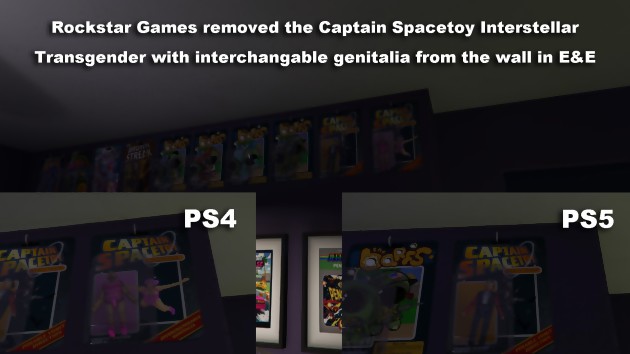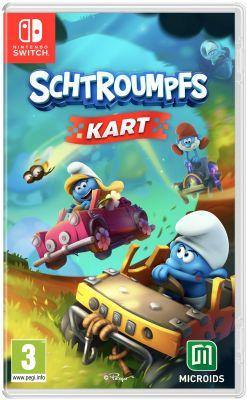 The Quarry takes its name from Hackett's Quarry ("Hackett's Quarry") holiday camp which serves as the setting for the adventure. But in English, quarry also means "prey" and it's no coincidence... Whether it's the scenario, the characters or the atmosphere in general, the game from Supermassive Games is a strong tribute to the films of horror of the 80s and 90s, which often sent a gang of teenagers or young adults to the slaughterhouse. This is indeed the case here, since the fate of nine different characters is entrusted to us. The game's prologue introduces us to Laura and Max, who will never have the opportunity to begin their career as colony monitors, while the first chapter allows us to meet Dylan, Jacob, Kaitlyn, Nick, Ryan, Abigail and Emma on the last day of vacation (and therefore of their job). Teenage love seems at first to be at the heart of the scenario since Dylan and Kaitlyn both fall for Ryan, Jacob and Emma have just separated, while Abigail and Nick turn around. But these fairly slow-paced exposition scenes obviously serve to familiarize us with the characters, in order to better manhandle them later. Because the raw and bloody horror will quickly catch up with all this beautiful little world, on the occasion of a last improvised campfire. In order to avoid any spoilers, we will tell you absolutely nothing about what threatens the group of young people, but know that the scenario takes up the codes of the most classic horror in an assumed way, without ever falling too much. in the pictures, however. The introductory scene also uses a camera floating at ground level, Evil Dead style, while one of the characters makes a direct reference to Sam Raimi's film from the first minutes of the game. at the end, the interface multiplies the reminders of the video recorders of yesteryear, while the most important branches are illustrated in the menus by fake VHS cassettes with deliciously retro packaging. And that, we love it!
The Quarry takes its name from Hackett's Quarry ("Hackett's Quarry") holiday camp which serves as the setting for the adventure. But in English, quarry also means "prey" and it's no coincidence... Whether it's the scenario, the characters or the atmosphere in general, the game from Supermassive Games is a strong tribute to the films of horror of the 80s and 90s, which often sent a gang of teenagers or young adults to the slaughterhouse. This is indeed the case here, since the fate of nine different characters is entrusted to us. The game's prologue introduces us to Laura and Max, who will never have the opportunity to begin their career as colony monitors, while the first chapter allows us to meet Dylan, Jacob, Kaitlyn, Nick, Ryan, Abigail and Emma on the last day of vacation (and therefore of their job). Teenage love seems at first to be at the heart of the scenario since Dylan and Kaitlyn both fall for Ryan, Jacob and Emma have just separated, while Abigail and Nick turn around. But these fairly slow-paced exposition scenes obviously serve to familiarize us with the characters, in order to better manhandle them later. Because the raw and bloody horror will quickly catch up with all this beautiful little world, on the occasion of a last improvised campfire. In order to avoid any spoilers, we will tell you absolutely nothing about what threatens the group of young people, but know that the scenario takes up the codes of the most classic horror in an assumed way, without ever falling too much. in the pictures, however. The introductory scene also uses a camera floating at ground level, Evil Dead style, while one of the characters makes a direct reference to Sam Raimi's film from the first minutes of the game. at the end, the interface multiplies the reminders of the video recorders of yesteryear, while the most important branches are illustrated in the menus by fake VHS cassettes with deliciously retro packaging. And that, we love it!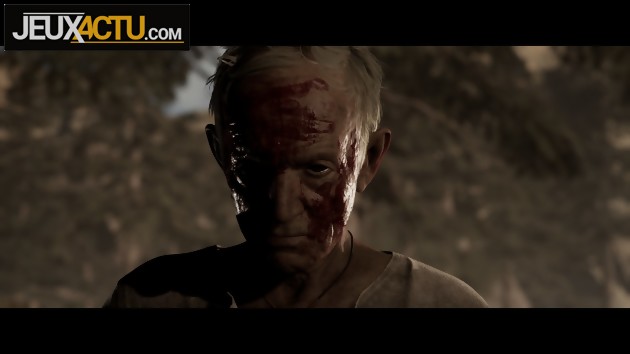
THE HISTORY OF ONE HUNDRED FINS
 The branches just mentioned have the good taste of never being revealed to the player in advance. They can therefore intervene after a seemingly innocuous choice. But the game takes care to tell us afterwards, by displaying the message "chosen path", that we have just deviated the scenario significantly. The less crucial choices are underlined by information of the type "so and so is disappointed", in the manner of the Telltales games. And choices, you will make dozens and dozens. This is the main gameplay mechanic, and it's not pretending! Admittedly, there will always be some false choices that lead to the same result, but the fate of different characters can really vary completely. To be convinced of this, just refer to the official number of endings, which is 186! Difficult to verify this in practice, but we can assure you that the replayability is indeed present. Just with the possibility of saving or seeing each of the nine heroes die, there is already enough to do. The abundance of choices has this good thing that even obsessive compulsive people will be forced to let go and let themselves be carried away by the adventure (there is indeed an option to "rewind" in the event of a character's death, but it is limited to three lives). Moreover, there is not really a bad choice because in one case you will have the satisfaction of having saved a life, and in the other that of witnessing a deliciously gory scene. Beyond small and big decisions, the game has several additional, more anecdotal mechanics. The tarot cards to find in the sets allow you to have a brief overview of a scene to come between each chapter. The essential QTEs are also included, and they could almost be like choices, they are so easy. In other words: you almost have to do it on purpose to miss them. Different clues and evidence are to be collected during the exploration phases. And a few more action-oriented sequences bring a little adrenaline rush from time to time, whether it's firing a shotgun or holding your breath so you don't get spotted by an enemy. But make no mistake, The Quarry remains above all a narrative adventure inspired by cinematography.
The branches just mentioned have the good taste of never being revealed to the player in advance. They can therefore intervene after a seemingly innocuous choice. But the game takes care to tell us afterwards, by displaying the message "chosen path", that we have just deviated the scenario significantly. The less crucial choices are underlined by information of the type "so and so is disappointed", in the manner of the Telltales games. And choices, you will make dozens and dozens. This is the main gameplay mechanic, and it's not pretending! Admittedly, there will always be some false choices that lead to the same result, but the fate of different characters can really vary completely. To be convinced of this, just refer to the official number of endings, which is 186! Difficult to verify this in practice, but we can assure you that the replayability is indeed present. Just with the possibility of saving or seeing each of the nine heroes die, there is already enough to do. The abundance of choices has this good thing that even obsessive compulsive people will be forced to let go and let themselves be carried away by the adventure (there is indeed an option to "rewind" in the event of a character's death, but it is limited to three lives). Moreover, there is not really a bad choice because in one case you will have the satisfaction of having saved a life, and in the other that of witnessing a deliciously gory scene. Beyond small and big decisions, the game has several additional, more anecdotal mechanics. The tarot cards to find in the sets allow you to have a brief overview of a scene to come between each chapter. The essential QTEs are also included, and they could almost be like choices, they are so easy. In other words: you almost have to do it on purpose to miss them. Different clues and evidence are to be collected during the exploration phases. And a few more action-oriented sequences bring a little adrenaline rush from time to time, whether it's firing a shotgun or holding your breath so you don't get spotted by an enemy. But make no mistake, The Quarry remains above all a narrative adventure inspired by cinematography.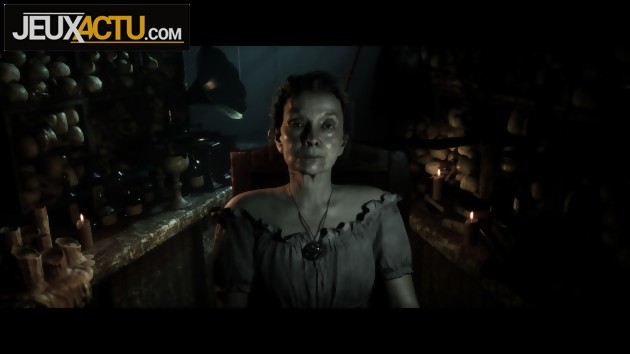
IN THE VALLEY, OH, OH...
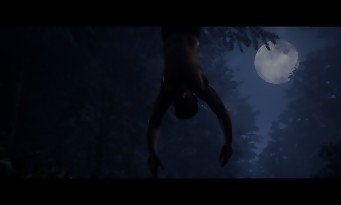 Cinephiles will also be delighted to find sought-after camera angles, grain on the image (as well as a few additional and optional cosmetic filters), professional actors in the cast (in the forefront of which is David Arquette in the role of director du camp) as well as a motion capture and a performance capture. It's very simple, it is sometimes almost impossible to realize that we are dealing with virtual and not real actors. The game does not hesitate to regularly display very close-ups on the faces, in order to show us what it is capable of. Unfortunately, however, the magic does not always work. Very regularly the game finds itself in the middle of "uncanny valley" (or "disturbing valley" in good French), this uncomfortable position where the artificial is so close to the real that the slightest defect is obvious and makes the player uncomfortable. spectator. This is undoubtedly the case here, and everyone will be embarrassed (more or less according to their sensitivity) by these twisted mouths, these too cartoonish facial expressions for such realistic faces, this cardboard hair, and these too long necks and too soft.
Cinephiles will also be delighted to find sought-after camera angles, grain on the image (as well as a few additional and optional cosmetic filters), professional actors in the cast (in the forefront of which is David Arquette in the role of director du camp) as well as a motion capture and a performance capture. It's very simple, it is sometimes almost impossible to realize that we are dealing with virtual and not real actors. The game does not hesitate to regularly display very close-ups on the faces, in order to show us what it is capable of. Unfortunately, however, the magic does not always work. Very regularly the game finds itself in the middle of "uncanny valley" (or "disturbing valley" in good French), this uncomfortable position where the artificial is so close to the real that the slightest defect is obvious and makes the player uncomfortable. spectator. This is undoubtedly the case here, and everyone will be embarrassed (more or less according to their sensitivity) by these twisted mouths, these too cartoonish facial expressions for such realistic faces, this cardboard hair, and these too long necks and too soft.
And while the game boasts top-notch graphics most of the time, it surprisingly suffers from a few technical weaknesses unrelated to the Valley of the Weird. This is the case with splashes of water (black as oil), certain depth of field effects (which evoke the portrait mode of a low-end smartphone more than a cinema lens), certain clumsy transitions ( a lot of "shot on shot") and, above all, movements that are far too steep, not really worthy of a 2022 game. We therefore constantly oscillate between wonder at the beauty of certain scenes and disappointment at the different small shadows on the board. The French dubbing, on the other hand, is almost flawless, while the possibility of launching the game in coop (each player embodies one of the characters) or in one of the “cinema modes” is really welcome. One of these modes allows you to view a montage where everyone survives, another where everyone dies, yet another focuses on gore scenes, and a last allows you to "program" in advance the reactions of the characters in exploration, in combat, in dialogue and under pressure. All these possibilities allow you to explore alternative paths without having to replay, but perfection is also not there, since a fast forward option would have made this task easier.




